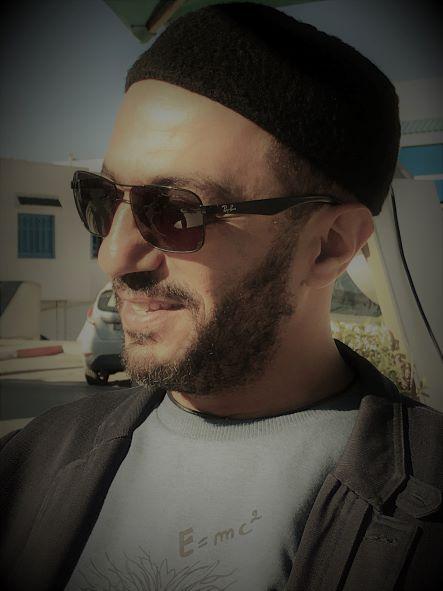The great Santa Claus controversy
By Khaled Diab
It's the Western world's greatest childhood controversy: does Santa Claus exist? The answer is both comforting and disturbing to the children among us and within us.
December 2008
Kids at a primary school in Manchester got an unpleasant surprise when a supply teacher told them that Santa Claus does not exist. Aggrieved parents were angry because the teacher had shattered all those childhood illusions of a jolly ho-ho-ho superhero who has apparently found a way, equipped with only a few reindeer and a flying sleigh, to bend the time-space continuum, and like a weird quantum particle, be in millions of places at once.

For her transgression, the poor teacher got the sack – and not the one containing Santa's toys – which is unfair considering that she was only telling the truth. Besides, should seven- or eight-year-olds continue to live in a Never Land of infantile fantasy and how many of them truly believe in Father Christmas anyway?
Having grown up in a Muslim household, I never did, and many of my friends at that age either knew or suspected that it was an elaborate game of make-believe. And childhood, after all is about make-believe: suspending disbelief for the fun of it.
An American friend says that, by the age of five, two glaring clues led him to deduce the non-existence of Santa: that it was physically impossible for him to visit every house in the world at midnight and his workshop seemed to churn out branded toys he saw in the shops. At about the same age, an Australian friend decided Father Christmas was a hoax because he rode through suburbia on a tandem trailer and bore a striking, and sweaty, resemblance to a bloke who lived down the road.
However, in a generous seasonal gesture of damage limitation, I have some good news for the kids at Blackshaw Lane primary school: Santa Claus is real and, in many ways, is far more interesting that the hyped-up, fairy tale version we know today.
Once upon a time (in the third century), in a land far, far away (Byzantine Anatolia, to be precise), there lived a man called Nicholas (270-345) who was so saintly that the church canonised him within a century of his death – hence, ‘Santa Claus'.
As Bishop of Myra, his devoutness led him to use his significant inheritance to help the poor while leading a life of austerity himself. One story tells of how the goodly bishop anonymously helped an old man with the dowry for his three daughters by tossing bags of gold through their open window which landed in stockings hanging up to dry by the hearth (sound familiar?).
But the man had a less pleasant and more militant side. He lived around the time when Christians, like so many other movements, were about to go from being the persecuted to become the persecutors.
Bishop Nicholas is believed to have attended this First Ecumenical Council which stamped out competing views of the nature of Christ, such as Arianism, which held that Jesus was not of the same substance, i.e. ‘consubstantial', as God, undermining the Trinity.
Like a present-day Talib destroying “pagan” statues of Buddha, Saint Nicholas is also attributed with razing numerous pre-Christian temples, including that of the Roman goddess Diana.
Interestingly, Diana's birthday is on 6 December which later became the Saint's own day. Some historians believe this is no coincidence and was intended as a way of giving a Christian identity to an ancient festival that refused to die away – much like Christmas as a substitute for popular pagan mid-winter festivals.
So, what caused Saint Nicholas to drift nearly three weeks down the calendar? Well, in Belgium and the Netherlands, ‘Sinterklaas', as it is known locally, is still celebrated on 6 December, with a lot of fanfare, including the Saint's eagerly awaited arrival with his Moorish helpers from Spain, where he is believed to live.
In England, the personification of Christmas as a jolly old man – known as Sir, Lord or Father Christmas – began in the 17th century to resist party-pooper Puritans. In fact, unlike the annual tabloid rumours of local council's prohibiting Christmas, Oliver Cromwell actually did ban the observance of the feast in 1644.
The original personification of Christmas was not as a gift bearer for children. This idea arrived in Victorian times from the United States, in whose melting pot, Saint Nicholas, brought by Dutch immigrants to New Amsterdam (now New York), was merged with the Anglo-Saxon Father Christmas. Interestingly, the Netherlands and Belgium, recently re-imported this tradition from the United States and now have a “kerstman” (the Christmas Man) on Christmas Eve, in addition to their Sinterklaas.
Going even further back, Santa Claus seems to borrow heavily from pre-Christian Germanic beliefs, such as the chief Norse god Odin, who would ride at the head of a celestial hunting party. Moreover, Norse children would place their boots, filled with carrots, straw, or sugar, near the chimney for Odin's flying horse, Sleipnir, to eat. In return, they were rewarded with a gift.
Santa as we know him may not be real, but the story of the man and the myth is more fascinating than a pot-bellied old man in a red suit crying out “Ho, ho, ho!” Merry Christmas all.
This column appeared in The Guardian Unlimited's Comment is Free section on 24 December 2008. Read the related discussion.
This is an archive piece that was migrated to this website from Diabolic Digest



Pingback: Season’s salaams this Christmas - The Chronikler